11 start with G start with G

Galaxies are among nature’s most awe-inspiring and beautifully formed objects. In this highly informative and lucidly written book, Paul Hodge seeks to demystify galaxies and to examine closely our present-day knowledge of these magnificent star systems.
Hodge brings a historical perspective to his discussion of galactic research. He presents a summary of the revolutionary discoveries of the last decade, and he shows how they have contributed to our understanding of the nature and composition of the universe. Whereas previously perhaps a dozen astronomers devoted themselves to galaxy research, using two or three large telescopes, now hundreds of scientists are penetrating the mystery of the galactic world. This intensified research has yielded ground-breaking results: we are beginning to understand the enigmatic properties of the highly luminous yet relatively small quasars; we have a clearer understanding of the processes that generate spiral arms; we have a good idea of how different types of galaxies evolve; and we continue to grapple with the problem of the missing mass that is greater than anything detectable in the visible part of the galaxies.
This book succeeds in making the immense and remote universe of galaxies much more accessible to our imagination. It also conveys the excitement and wonder of this rapidly changing area of scientific inquiry. Enriched by numerous illustrations and written in an engaging style, Galaxies offers a nontechnical yet intelligent approach to the concepts and results of modern galactic research.

Orienting us with an insider’s tour of our cosmic home, the Milky Way, William Waller and Paul Hodge then take us on a spectacular journey, inviting us to probe the exquisite structures and dynamics of the giant spiral and elliptical galaxies, to witness colliding and erupting galaxies, and to pay our respects to the most powerful galaxies of all—the quasars. A basic guide to the latest news from the cosmic frontier—about the black holes in the centers of galaxies, about the way in which some galaxies cannibalize each other, about the vast distances between galaxies, and about the remarkable new evidence regarding dark energy and the cosmic expansion—this book gives us a firm foundation for exploring the more speculative fringes of our current understanding.
This is a heavily revised and completely updated version of Hodge’s Galaxies, which won an Association of American Publishers PROSE Award for Best Science Book of the Year in 1986.
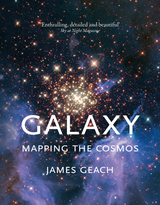
Taking us on a compelling tour of the state-of-the-art science involved in mapping the infinite, Geach offers a first-hand account of both the science itself and how it is done, describing what we currently know as well as that which we still do not. He goes back one hundred years to when scientists first proved the existence of other galaxies, tracking our continued improvement in the ability to collect and interpret the light that stars in faraway galaxies have emitted through space and time. He discusses examples of this rapidly accelerating research, from the initial discovery that the faint “spiral nebulae” were actually separate star systems located far beyond the Milky Way to the latest observations of the nature of galaxies and how they have evolved. He also delves into the theoretical framework and simulations that describe our current “world model” of the universe.
With one hundred superb color illustrations, Galaxy is an illuminating guide to the choreography of the cosmos and how we came to know our place within it that will appeal to any stargazer who has wondered what was beyond their sight.
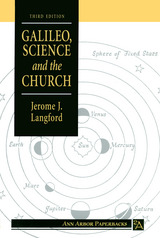
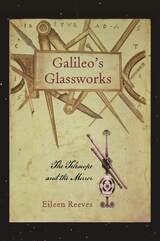
The Dutch telescope and the Italian scientist Galileo have long enjoyed a durable connection in the popular mind--so much so that it seems this simple glass instrument transformed a rather modest middle-aged scholar into the bold icon of the Copernican Revolution. And yet the extraordinary speed with which the telescope changed the course of Galileo's life and early modern astronomy obscures the astronomer's own curiously delayed encounter with the instrument. This book considers the lapse between the telescope's creation in The Hague in 1608 and Galileo's alleged acquaintance with such news ten months later. In an inquiry into scientific and cultural history, Eileen Reeves explores two fundamental questions of intellectual accountability: what did Galileo know of the invention of the telescope, and when did he know it?
The record suggests that Galileo, like several of his peers, initially misunderstood the basic design of the telescope. In seeking to explain the gap between the telescope's emergence and the alleged date of the astronomer's acquaintance with it, Reeves explores how and why information about the telescope was transmitted, suppressed, or misconstrued in the process. Her revised version of events, rejecting the usual explanations of silence and idleness, is a revealing account of the role that misprision, error, and preconception play in the advancement of science.
Along the way, Reeves offers a revised chronology of Galileo's life in a critical period and, more generally, shows how documents typically outside the scope of early modern natural philosophy--medieval romances, travel literature, and idle speculations--relate to two crucial events in the history of science.
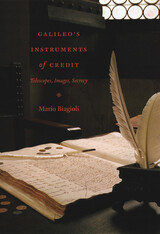
Galileo's Instruments of Credit proposes radical new interpretations of several key episodes of Galileo's career, including his early telescopic discoveries of 1610, the dispute over sunspots, and the conflict with the Holy Office over the relationship between Copernicanism and Scripture. Galileo's tactics during this time shifted as rapidly as his circumstances, argues Mario Biagioli, and the pace of these changes forced him to respond swiftly to the opportunities and risks posed by unforeseen inventions, further discoveries, and the interventions of his opponents.
Focusing on the aspects of Galileo's scientific life that extend beyond the framework of court culture and patronage, Biagioli offers a revisionist account of the different systems of exchanges, communication, and credibility at work in various phases of Galileo's career. Galileo's Instruments of Credit will find grateful readers among scholars of science studies, historical epistemology, visual studies, Galilean science, and late Renaissance astronomy.
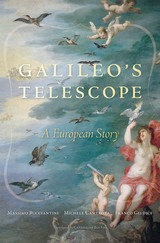
Between 1608 and 1610 the canopy of the night sky changed forever, ripped open by an object created almost by accident: a cylinder with lenses at both ends. Galileo’s Telescope tells the story of how an ingenious optical device evolved from a toy-like curiosity into a precision scientific instrument, all in a few years. In transcending the limits of human vision, the telescope transformed humanity’s view of itself and knowledge of the cosmos.
Galileo plays a leading—but by no means solo—part in this riveting tale. He shares the stage with mathematicians, astronomers, and theologians from Paolo Sarpi to Johannes Kepler and Cardinal Bellarmine, sovereigns such as Rudolph II and James I, as well as craftsmen, courtiers, poets, and painters. Starting in the Netherlands, where a spectacle-maker created a spyglass with the modest magnifying power of three, the telescope spread like technological wildfire to Venice, Rome, Prague, Paris, London, and ultimately India and China. Galileo’s celestial discoveries—hundreds of stars previously invisible to the naked eye, lunar mountains, and moons orbiting Jupiter—were announced to the world in his revolutionary treatise Sidereus Nuncius.
Combining science, politics, religion, and the arts, Galileo’s Telescope rewrites the early history of a world-shattering innovation whose visual power ultimately came to embody meanings far beyond the science of the stars.
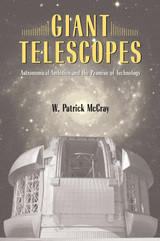
Every night, astronomers use a new generation of giant telescopes at observatories around the world to study phenomena at the forefront of science. By focusing on the history of the Gemini Observatory—twin 8-meter telescopes located on mountain peaks in Hawaii and Chile—Giant Telescopes tells the story behind the planning and construction of modern scientific tools, offering a detailed view of the technological and political transformation of astronomy in the postwar era.
Drawing on interviews with participants and archival documents, W. Patrick McCray describes the ambitions and machinations of prominent astronomers, engineers, funding patrons, and politicians in their effort to construct a modern facility for cutting-edge science—and to establish a model for international cooperation in the coming era of “megascience.” His account details the technological, institutional, cultural, and financial challenges that scientists faced while planning and building a new generation of giant telescopes. Besides exploring how and why scientists embraced the promise and potential of new technologies, he considers how these new tools affected what it means to be an astronomer. McCray’s book should interest anyone who desires a deeper understanding of the science, technology, and politics behind finding our place in the universe.
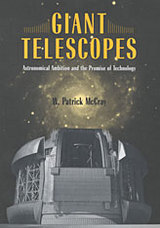
Every night, astronomers use a new generation of giant telescopes at observatories around the world to study phenomena at the forefront of science. By focusing on the history of the Gemini Observatory—twin 8-meter telescopes located on mountain peaks in Hawaii and Chile—Giant Telescopes tells the story behind the planning and construction of modern scientific tools, offering a detailed view of the technological and political transformation of astronomy in the postwar era.
Drawing on interviews with participants and archival documents, W. Patrick McCray describes the ambitions and machinations of prominent astronomers, engineers, funding patrons, and politicians in their effort to construct a modern facility for cutting-edge science—and to establish a model for international cooperation in the coming era of “megascience.” His account details the technological, institutional, cultural, and financial challenges that scientists faced while planning and building a new generation of giant telescopes. Besides exploring how and why scientists embraced the promise and potential of new technologies, he considers how these new tools affected what it means to be an astronomer. McCray’s book should interest anyone who desires a deeper understanding of the science, technology, and politics behind finding our place in the universe.
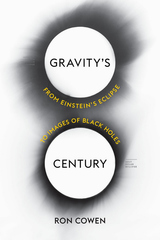
A sweeping account of the century of experimentation that confirmed Einstein’s general theory of relativity, bringing to life the science and scientists at the origins of relativity, the development of radio telescopes, the discovery of black holes and quasars, and the still unresolved place of gravity in quantum theory.
Albert Einstein did nothing of note on May 29, 1919, yet that is when he became immortal. On that day, astronomer Arthur Eddington and his team observed a solar eclipse and found something extraordinary: gravity bends light, just as Einstein predicted. The finding confirmed the theory of general relativity, fundamentally changing our understanding of space and time.
A century later, another group of astronomers is performing a similar experiment on a much larger scale. The Event Horizon Telescope, a globe-spanning array of radio dishes, is examining space surrounding Sagittarius A*, the supermassive black hole at the center of the Milky Way. As Ron Cowen recounts, the foremost goal of the experiment is to determine whether Einstein was right on the details. Gravity lies at the heart of what we don’t know about quantum mechanics, but tantalizing possibilities for deeper insight are offered by black holes. By observing starlight wrapping around Sagittarius A*, the telescope will not only provide the first direct view of an event horizon—a black hole’s point of no return—but will also enable scientists to test Einstein’s theory under the most extreme conditions.
Gravity’s Century shows how we got from the pivotal observations of the 1919 eclipse to the Event Horizon Telescope, and what is at stake today. Breaking down the physics in clear and approachable language, Cowen makes vivid how the quest to understand gravity is really the quest to comprehend the universe.
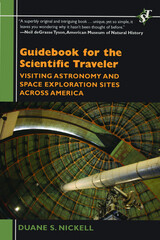
READERS
Browse our collection.
PUBLISHERS
See BiblioVault's publisher services.
STUDENT SERVICES
Files for college accessibility offices.
UChicago Accessibility Resources
home | accessibility | search | about | contact us
BiblioVault ® 2001 - 2024
The University of Chicago Press









